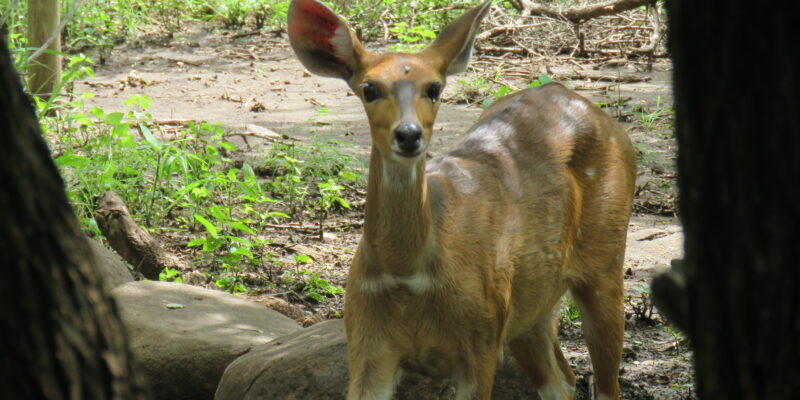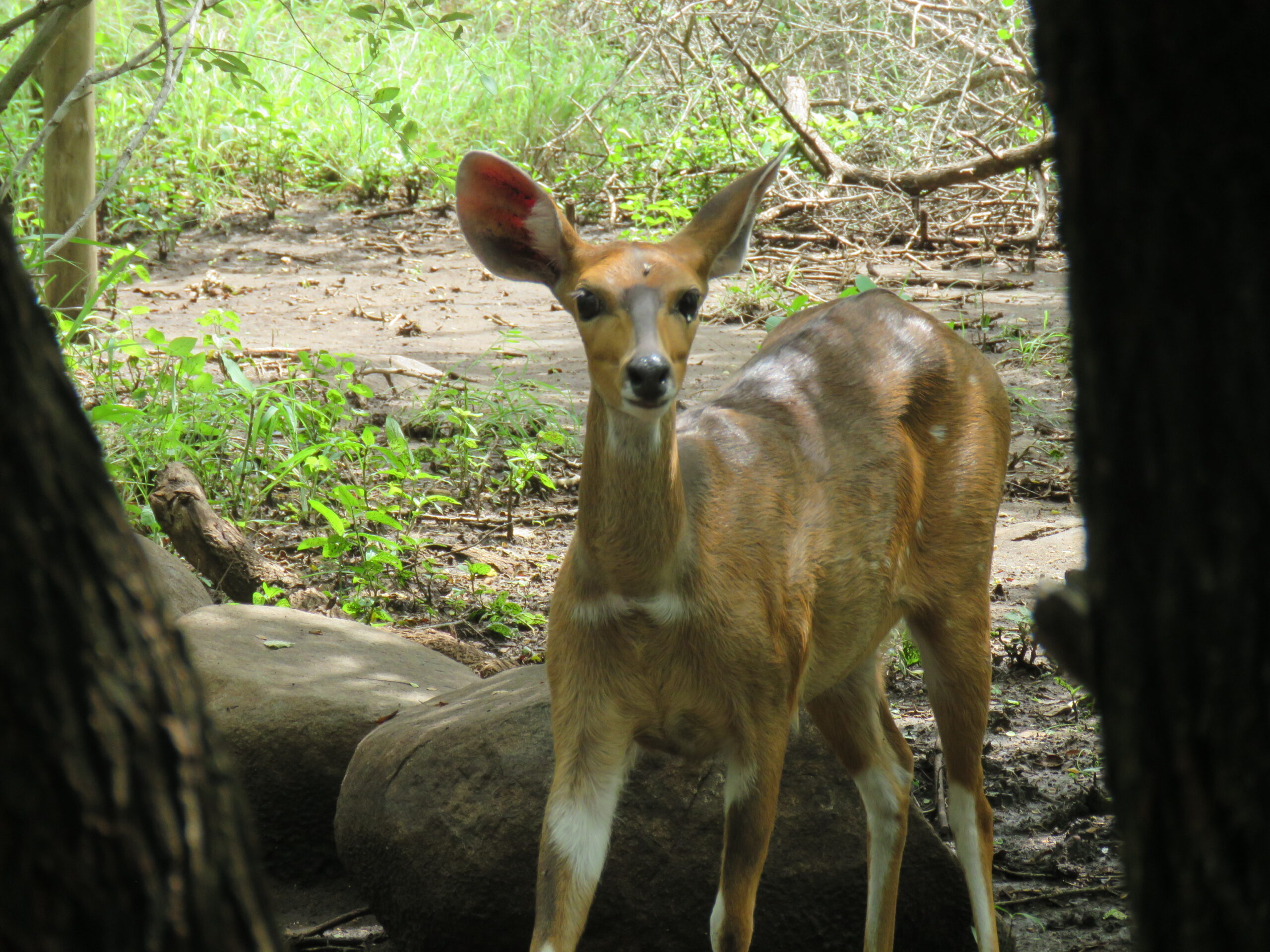-

Adorable female bushbuck.
Yesterday, while I was indoors, a persistent pig, albeit a warthog, identity unknown at this point, came up onto the veranda and tore a sizable hole in the sliding screen door. I was indoors at the time, but Tom caught the tail-end of his persistence. Was he looking for me or merely looking for me to offer him some pellets? Pigs are clever and, by some scientific observers, purported to be the 5th or 6th most intelligent animal on the planet. But, most likely, he was looking for pellets. I flatter myself in thinking it was otherwise.
We were disappointed to see the damage to the screen but relieved to know that Vusi will repair it soon using a roll of screening material Louise and Danie have on hand. Whew! If I were a warthog and wanted something, surely I’d forge ahead, using my most valuable weapon, the sharp-razor blade-like tusks nature provided to use for protection against apex predators and for digging up roots for food.
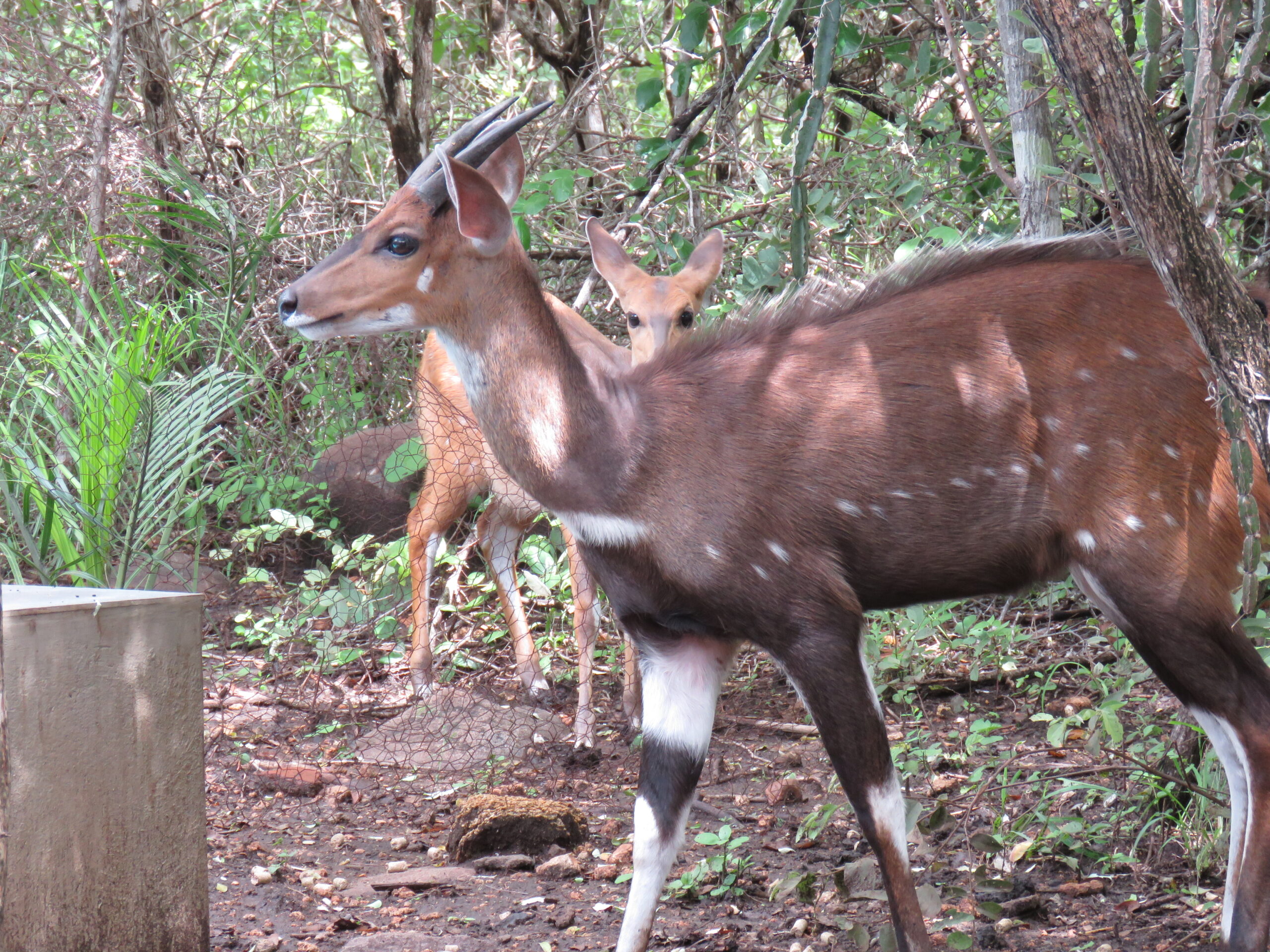
A few minutes ago, when I got up to get more coffee, Frank (Francolin) followed me into the house. I had to shoo him out since birds can panic when they feel trapped in a house. Of course, this was another laugh-fest for us. It’s surprising how quickly the wildlife feels comfortable enough with us to be so persistent.
Of course, immediately, I gathered up a container of seeds for him and The Misses and placed them on the cement edge of the veranda instead of on the muddy dirt in the garden. They didn’t flinch when I was right next to them. It’s so endearing, even though their acceptance of us took over a month to achieve.
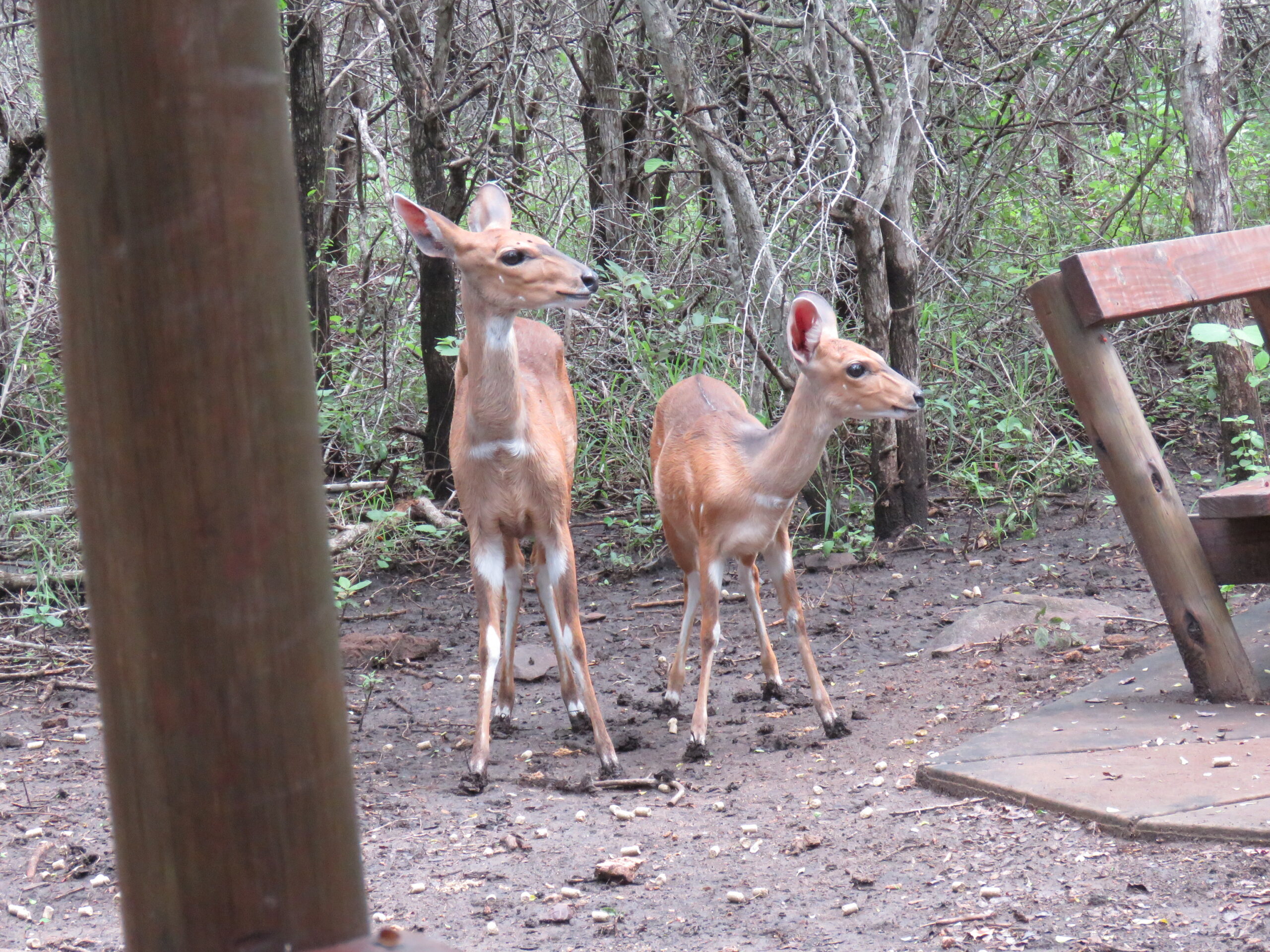
When I put seeds down for Frank and his various family members, if any are left after they are done eating, once the warthogs arrive, they immediately go after the seeds, the minute they’ve cleaned out the supply of pellets we’ve provided. In every case, I put up my hand in a “no” signal and say, in a high-pitched voice, “Don’t eat the seeds.” They’ve already learned the hand signal, and I no longer need to say a thing, just put up my hand. With their little beady eyes, they know what I mean. It’s not unlike training a dog, whose intellect ranks in the following position of intelligent animals, behind all pig breeds.
Kudus are also known to eat bird seeds at our old house in Marloth Park in 2018/2019. We’d placed a bird feeder in a tree. Invariably certain kudus would practically stand on their tiptoes to eat the seeds out of the feeder. Now, they seem less interested in the sources on the ground that Frank leaves behind. Pellets are their priority.
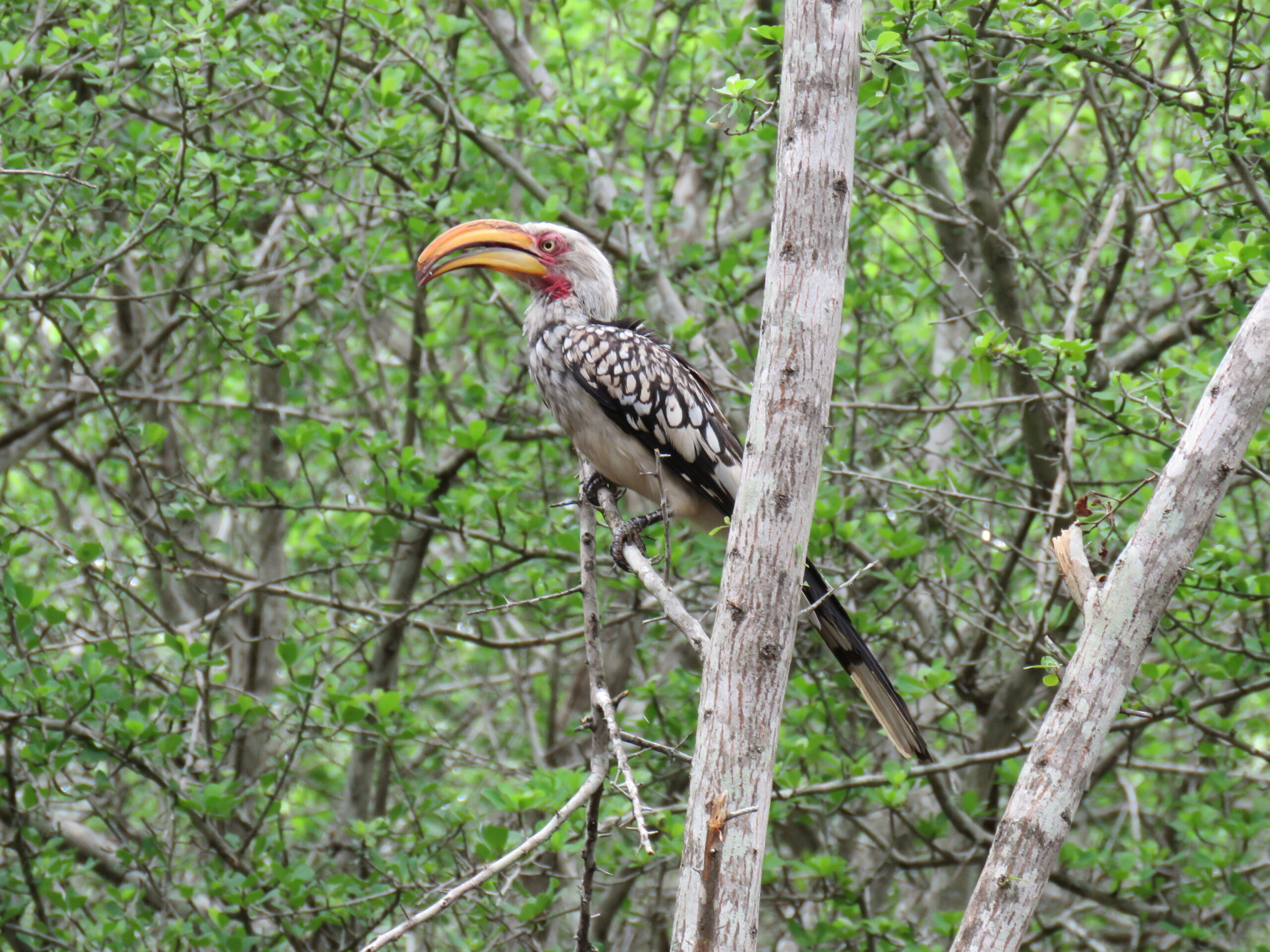
By nature, kudus, wildebeest, zebras, and others are inclined to be “reaching up” to eat greenery on trees and plants. Giraffes don’t bend down to eat the pellets but will do so to drink water. Thus, there is no food source the residents of Marloth Park can provide for the giraffes.
Over the years, these other species in Marloth Park have learned that pellets placed on the ground are also a good and tasty source of nutrition. Now, after all the rains, with the lush greenery in the bush providing them with abundant food sources, they still like the ease and convenience of eating pellets off the ground from any sources offered.
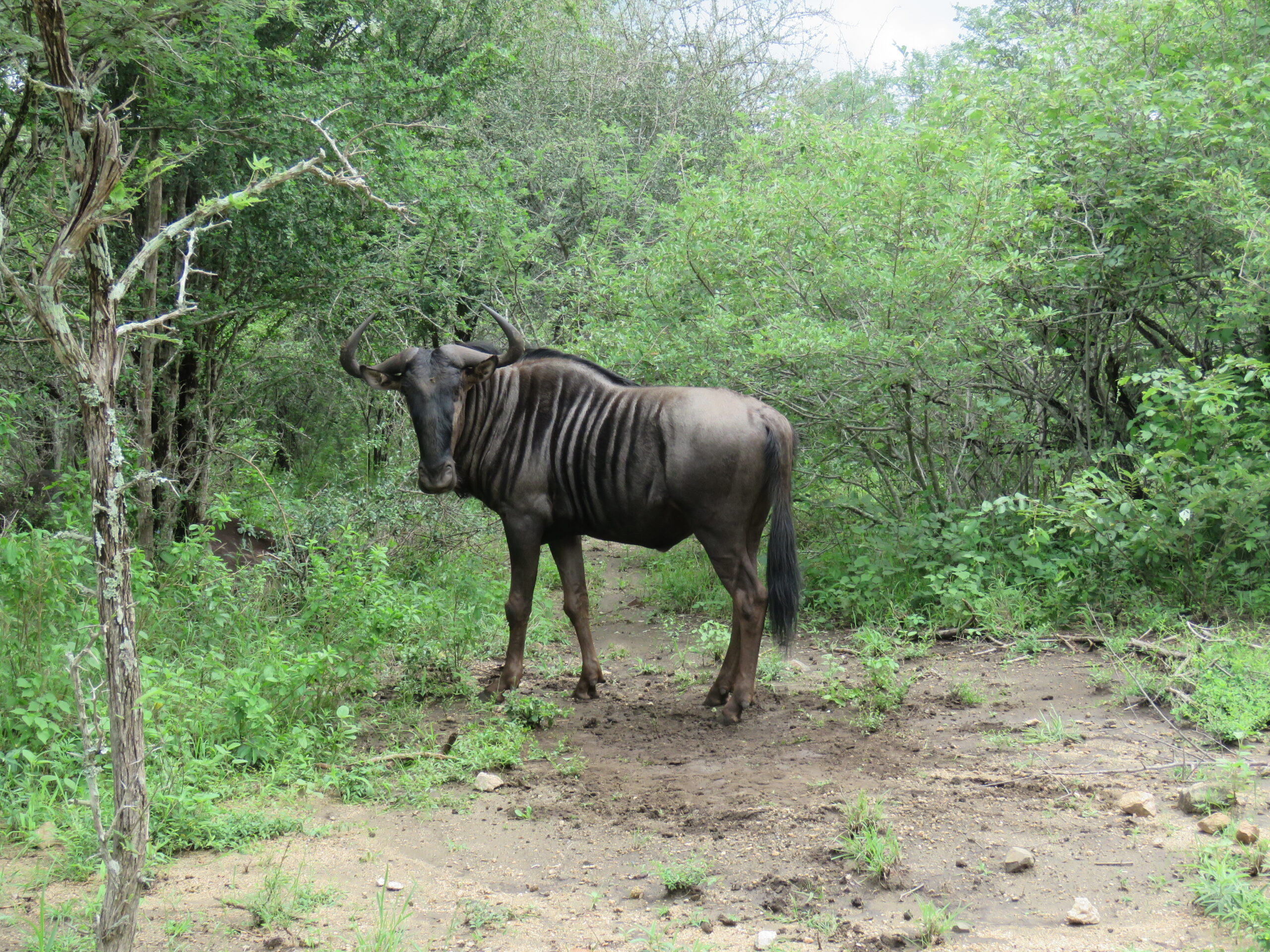
By far, pellets are healthier than “fast food,” but, maybe in a sense, they are the fast food savored by the various wildlife, particularly zebras, kudus, warthogs, and wildebeest. If no pellets are available, they will consume the leaves on the trees. However, in most cases, when pellets are available, they’ll eat them first and then go after the vegetation.
Thus, not offering them pellets doesn’t cause them to starve, except in times of severe drought during which periods, the homeowners and residents ramp up in offering pellets, carrots, apples, sweet potatoes, and Lucerne (hay). It is this effort that has ultimately saved many of the animals in Marloth Park over the years.

Of course, there is the controversial theory that when there is a drought, let “nature takes its course” and let starvation prevail. This is what happens in Kruger National Park during a drought. Many animals die from starvation and lack of water. But, it’s just about impossible for us animal-lovers in Marloth Park to sit back and let this happen. After all, isn’t that why we’re here in this hot, humid, insect, and snake-infested area with some of the worst dirt roads on the planet? It is.
So, folks, that’s it for today. Enjoy our new photos. We’ll be back with more tomorrow!
Photo from one year ago today, February 18, 2020:


